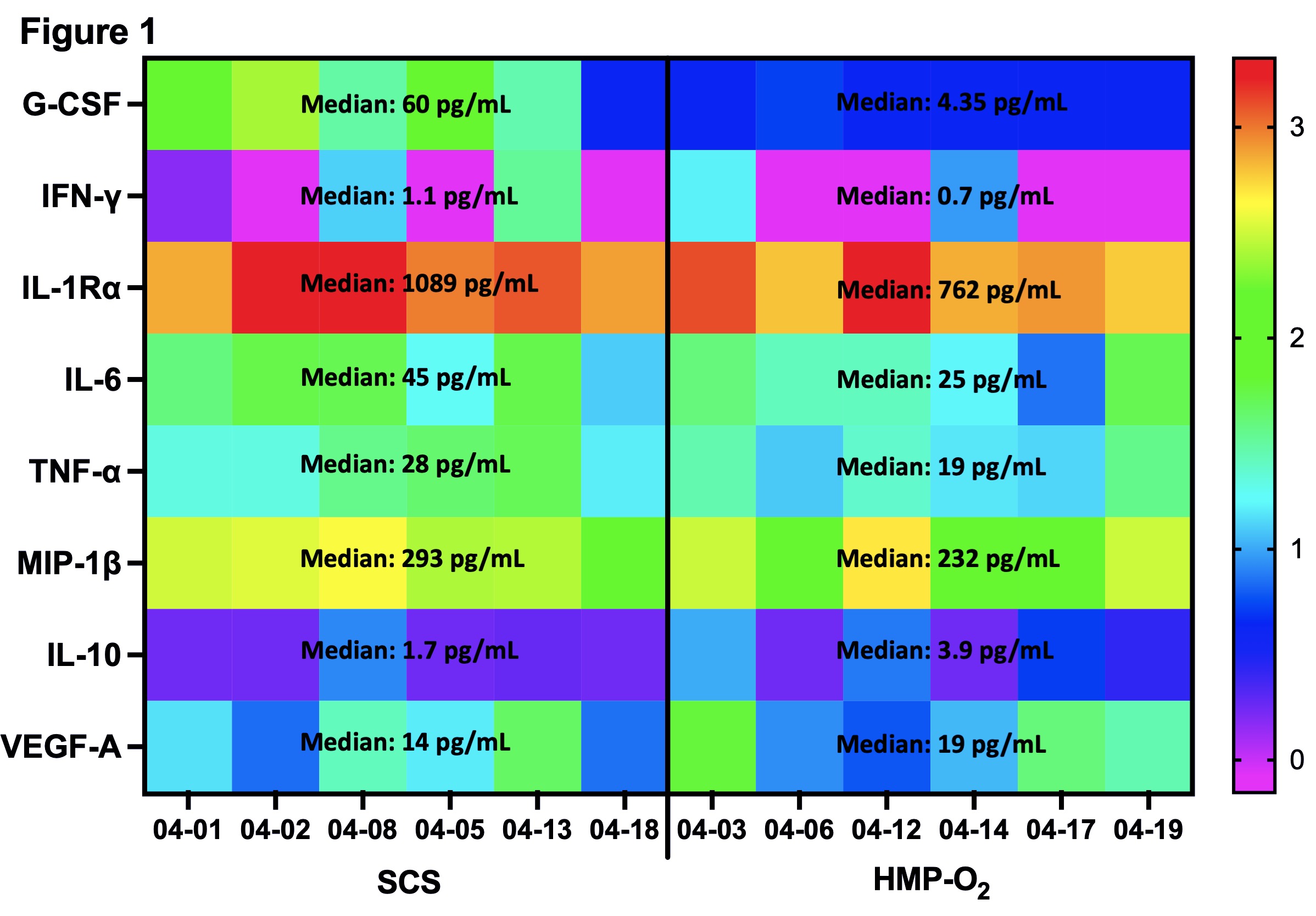Analysis of Tissue and Effluent Damage Associated Molecular Patterns Following Hypothermic Oxygenated Machine Perfusion vs Static Cold Storage in Liver Transplantation
Transplant Surgery, Rutgers New Jersey Medical School, Newark, NJ
Meeting: 2022 American Transplant Congress
Abstract number: 365
Keywords: Inflammation, Ischemia, Liver transplantation, Preservation
Topic: Basic Science » Basic Science » 15 - Machine Perfusion and Organ Rehabililtation - Basic
Session Information
Session Name: Machine Perfusion and Organ Rehabililtation - Basic
Session Type: Rapid Fire Oral Abstract
Date: Monday, June 6, 2022
Session Time: 5:30pm-7:00pm
 Presentation Time: 6:20pm-6:30pm
Presentation Time: 6:20pm-6:30pm
Location: Hynes Ballroom A
*Purpose: Hypothermic Oxygenated Machine Perfusion (HMP-O2) results in decreased ischemia/reperfusion injury (IRI) after liver transplantation; however, the molecular pathways of protection are largely unexplored. In this study we sought to compare damage associated molecular patters (DAMPs) following HMP-O2 vs standard of care static cold storage (SCS) to characterize these mechanisms further.
*Methods: Patients were transplanted at a single center from the PILOT trial (NCT03484455), the first prospective, randomized controlled trial of HMP-O2 in the US. Livers were randomized to HMP-O2 via the LifePort Transporter (Organ Recover Systems) or to SCS. First 20 patients proceeding to transplant were considered (7 HMP-O2; 13 SCS). Liver effluent was collected at termination of preservation; liver biopsy was obtained >1hr post reperfusion. Preliminary multiplex proteomic cytokine analysis in tissue homogenates and liver effluent was performed via Luminex (6 SCS and 6 HMP-O2).
*Results: Baseline donor and recipient characteristics were similar between groups. Early allograft dysfunction occurred in three cases, all SCS. HMP-O2 resulted in lower Comprehensive Complication Index (CCI 42 vs 56, p<0.05). HMP-O2 mitigated tissue inflammation: decreased G-CSF, IFN-γ, IL-1Rα, IL-6, TNF-α, and MIP-1ß. There was increased protective signaling following perfusion: increased IL-10 and VEGF-A, Figure 1. G-CSF was undetectable in HMP-O2 compared to SCS (p<0.05), and elevated levels correlated significantly with higher post-operative CCI (r=0.6, p<0.05). Cytokine analysis of effluent revealed overall increased inflammatory mediators post SCS vs HMP-O2. MIP-1ß – a cytokine often implicated in chronic/aberrant inflammatory signaling, was significantly higher following SCS vs HMP-O2 (p<0.05).
*Conclusions: HMP-O2 provides safe and effective preservation for liver allografts. Perfusion appears to decrease pro-inflammatory signaling with possible upregulation of anti-inflammatory pathways. This novel application of multiplex assessment of tissue and effluent DAMPs may reveal clinically relevant biomarkers of early allograft injury, allowing early intervention to improve patient outcomes.
To cite this abstract in AMA style:
Panayotova GG, Qin Y, Simonishvili S, Ayorinde T, Paterno F, Brown L, Amin A, Lunsford KE, Guarrera JV. Analysis of Tissue and Effluent Damage Associated Molecular Patterns Following Hypothermic Oxygenated Machine Perfusion vs Static Cold Storage in Liver Transplantation [abstract]. Am J Transplant. 2022; 22 (suppl 3). https://atcmeetingabstracts.com/abstract/analysis-of-tissue-and-effluent-damage-associated-molecular-patterns-following-hypothermic-oxygenated-machine-perfusion-vs-static-cold-storage-in-liver-transplantation/. Accessed December 12, 2025.« Back to 2022 American Transplant Congress

